Photographs: Jonathan Alcorn/Reuters
The online grocery start-up Webvan may have been the single most expensive flame-out of the dot-com era, blowing through more than $800 million in venture capital and IPO proceeds in just over three years before shutting its doors in 2001.
Twelve years later, though, Webvan is rising from the dead - in the form of an online grocery business called AmazonFresh.
Four key Amazon.com Inc executives - Doug Herrington, Peter Ham, Mick Mountz and Mark Mastandrea - are former Webvan officials who have spent years analysing and fixing the problems that led to the start-up's demise.
Kiva Systems, the robotics company that Amazon bought last year for $775 million in one of its largest-ever acquisitions, was built on ideas and technologies originally developed at Webvan and is a key part of the AmazonFresh strategy.
Even Webvan's old web address, webvan.com, is now part of the Amazon empire.
"We had a lot of Webvan DNA in the room and we drew on that experience a lot," said Tom Furphy, who helped start AmazonFresh with Herrington and Ham before leaving to become a venture capitalist.
"That was a good formula for building the business responsibly."
Amazon declined to comment for this story, or make any AmazonFresh executives available for interviews.
...
Amazon builds a grocery business from the ashes of Webvan
Image: An Amazon Fresh delivery van moves down Pico Bloulevard in Los Angeles, California.Photographs: Jonathan Alcorn/Reuters
Former Amazon and Webvan officials say Amazon drew three big lessons from the Webvan debacle: expand slowly, limit delivery to areas with a high concentration of potential customers, and focus relentlessly on warehouse efficiency.
The opportunity for Amazon is huge. The grocery business in the United States generated $568 billion in retail sales last year, with online accounting for less than 1 per cent, and it's among the last major retail sectors that the online giant has yet to tackle.
But the risks are large as well. Groceries are a notoriously low-margin business, and the aggressive expansion of discounters like Walmart has made the business even more cut-throat than it was in Webvan's day.
And competition in the online grocery business is heating up. FreshDirect and Peapod have been plugging away for years, while traditional grocery chains like Safeway also do online ordering and delivery. Walmart is testing its own fast delivery service in some markets in the United States now.
AmazonFresh now serves Seattle and Los Angeles, and it plans to launch in the San Francisco Bay Area later this year. If these cities go well, Amazon is eyeing 20 new markets for 2014.
...
Amazon builds a grocery business from the ashes of Webvan
Image: Amazon CEO Jeff Bezos with wife Mackenzie in New York.Photographs: Lucas Jackson/Reuters
But the big plans belie what has been one of Amazon's most cautious entries into a new business since founder and Chief Executive Jeff Bezos started selling books online in the 1990s.
The grocery service started in just two Seattle neighborhoods, Medina and Mercer Island, in 2007, and then slowly spread to other Seattle communities over the next five years. It didn't expand beyond Seattle until June 10 of this year, when it launched in Los Angeles.
The Los Angeles roll-out is similarly modest, covering only a few zip codes initially. "We know customers value this service but the economics remain challenging," an Amazon spokeswoman said when describing the L.A. launch.
Webvan - which ironically was also the brainchild of a book-seller, Louis Borders - expanded to nine major metro areas just 18 months after it began serving the San Francisco Bay Area, former executives recall. (Borders, co-founder of the now-defunct Borders Books & Music, declined to comment for this story.)
Webvan began its big expansion in Atlanta while the San Francisco service was still "wobbly," recalls Krishna Hegde, Webvan's vice-president of deployment and systems engineering.
...
Amazon builds a grocery business from the ashes of Webvan
Image: Workers in the Amazon.co.uk warehouse in Milton Keynes, north of London.Photographs: Dylan Martinez/Reuters
After the Atlanta launch in April 2000, Hegde said he recommended that the company slow down. But another executive argued the company should press on because of promises made to Wall Street investors, Hegde said.
Webvan "committed the cardinal sin of retail, which is to expand into a new territory - in our case several territories - before we had demonstrated success in the first market," said Mike Moritz, a Webvan board member and partner at Sequoia Capital, one of the company's venture capital backers.
"In fact, we were busy demonstrating failure in the Bay Area market while we expanded into other regions." Webvan not only launched in many cities, it also offered service across entire metro areas. That resulted in the company's delivery trucks making many trips where they only dropped off a few orders.
"The biggest failure of Webvan was delivery density," said Gary Dahl, vice president of distribution at Webvan from 1997 to 2001. In the Bay Area, he said, Webvan made money delivering in San Francisco and Oakland, but lost a lot of money delivering in suburbs such as Orinda and Moraga.
...
Amazon builds a grocery business from the ashes of Webvan
Image: A worker packs boxes at Amazon's logistics centre in Graben near Augsburg, Germany.Photographs: Michael Dalder/Reuters
"Mean travel time between delivery stops is the key to success in the home delivery business," Dahl explained. "Travel one block in San Francisco and you have passed 200 people, travel one block in Moraga and you have passed about six people."
AmazonFresh has tackled this problem by only delivering to densely populated areas of Seattle, and it's taking the same approach in LA, according to Keith Anderson, an executive at consulting firm RetailNet Group.
"If you drive into certain neighborhoods in Seattle you will see a lot of front doors with AmazonFresh totes," he said. "That's because Amazon expanded gradually into specific neighborhoods and tried to deliver to lots of homes in those specific areas."
FreshDirect covers more than 80 percent of the New York metro area, but it took the company about a decade to expand its delivery network this wide. Last year, FreshDirect launched in Philadelphia. Webvan also suffered severely from weaknesses in the design and technology of its giant warehouses.
At its first facility, there was a single conveyor belt that snaked about five miles through the building bringing items to workers, who would then pick and pack the products into totes, Webvan Chief Technology Officer Peter Relan said. When the conveyor belt broke, the operation would grind to a halt, he recalled.
...
Amazon builds a grocery business from the ashes of Webvan
Image: A worker collects orders at Amazon's fulfilment centre in Rugeley, central England.Photographs: Phil Noble/Reuters
Mick Mountz, an MIT-trained Webvan executive, oversaw the picking and packing process, along with Mark Mastandrea, and together they tried out lots of technology to make the warehouse run more efficiently, according to Relan.
For each $100 bag of groceries, it cost Webvan about $30 to pick and pack; the company had to get that down to $10 to make the process economically viable. Mountz came up with a solution based on multiple robots that would bring products from different parts of the warehouse to human workers for picking and packing. Unlike a conveyor belt, if a robot broke down it could be fixed while the other robots continued their work.
However, Webvan had spent so much on its original warehouse - about $100 million, according to Relan - that the company was loath to completely change the process in favor of robots. After Webvan went bust in 2001, Mountz founded Kiva Systems, which designed and built robots that now zip around the warehouses of retailers including Staples Inc, Walgreen Co and Gap Inc.
Amazon bought Kiva in 2012 for $775 million. Mountz is still running Kiva, while Mastandrea became director of delivery experience at AmazonFresh in March.
...
Amazon builds a grocery business from the ashes of Webvan
Image: A driver delivers packages from Amazon.com in Boston, Massachusetts.Photographs: Brian Snyder/Reuters
"When there are a large number of products and the shapes and sizes vary, as they do in grocery, you still need a human at the end to do the picking and packing," said Ajay Agarwal of Bain Capital Ventures, which was an early investor in Kiva.
"The Kiva System is the best solution out there for that combination of warehouse technology and human workers." Amazon has one other thing Webvan never had: a huge, existing customer base. While Webvan had planned to expand into delivery of other goods once it had developed a base of grocery customers, Amazon is going the other way, and can help defray the cost of delivering groceries by delivering books or electronics at the same time.
There are other advantages that have accrued over time. The spread of cloud computing services - pioneered by Amazon's Web Services business - makes it cheaper to run online businesses, while consumers are more comfortable buying online through faster Internet connections.
Online shoppers who type "webvan.com" into an Internet browser today will find a website selling more than 45,000 non-perishable grocery items. In the top right-hand corner, it says Webvan is "part of the amazon.com family" and consumers can use their existing Amazon accounts to buy.
"Amazon purchased the name a couple of years ago," Dahl said. "Maybe they will revive it if sales are slow in the Bay Area."

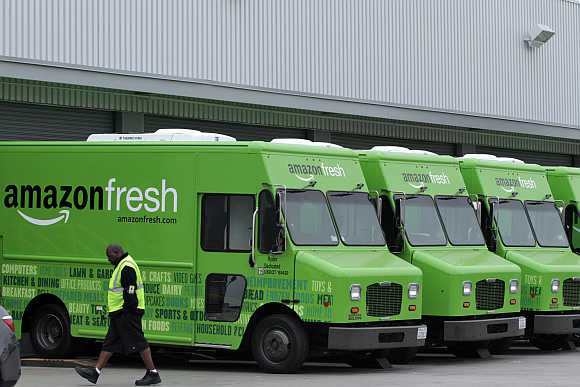


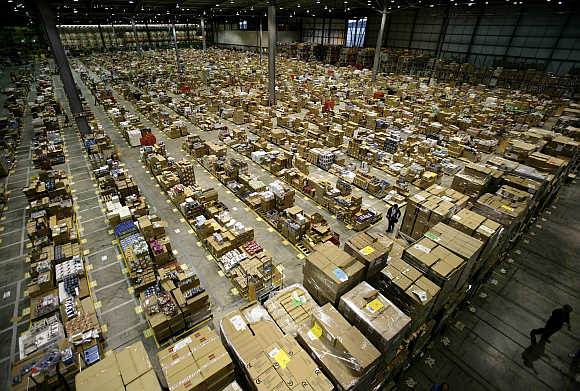
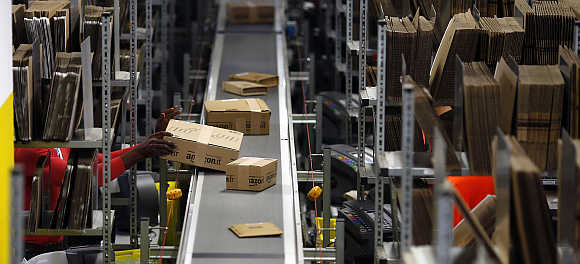
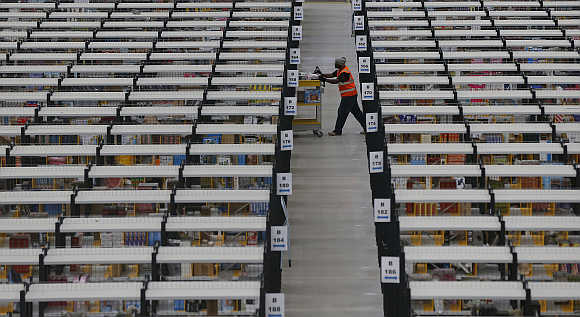
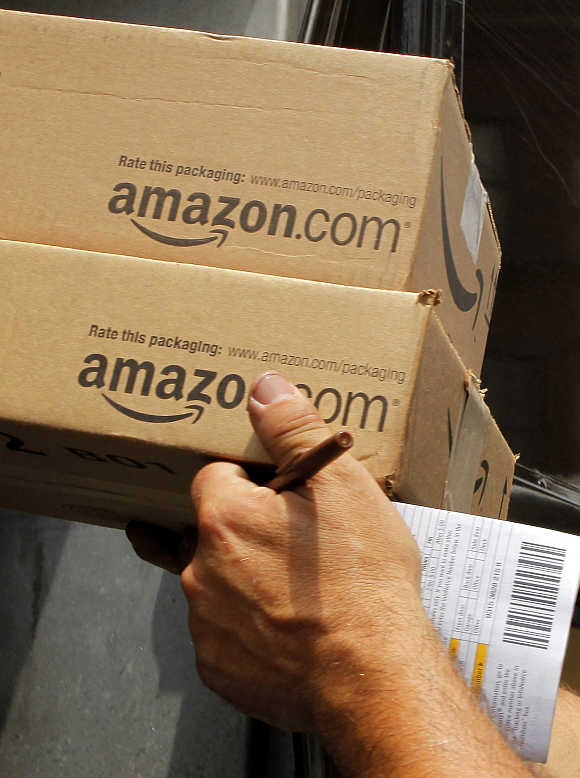

article